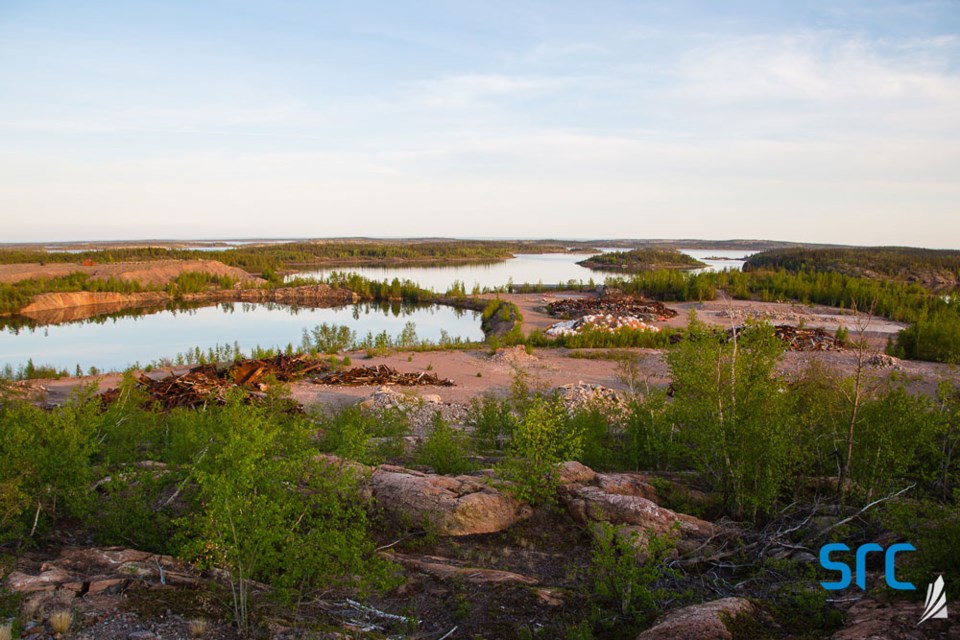During the 1950s and 60s, the demand for uranium was insatiable.
It was the dawn of the nuclear age, and uranium was needed to fuel a wave of new nuclear power plants across the continent. It was also the height of the Cold War, and the United States was building tens of thousands of nuclear warheads, made with plutonium which was derived from uranium. Canada supplied a substantial portion of that uranium.
A good chunk of that uranium came from Uranium City, in the extreme northwest corner of Saskatchewan, on the shores of Lake Athabasca. The Gunnar Mine, 40 kilometres southwest of Uranium City, was a source of a substantial amount of that uranium. But after operating just eight years, employing up to 800 people at a time, the mine closed down in 1963 and was abandoned.
There was no cleanup of the mine or facilities. With the people who operated the mine long gone, the Government of Saskatchewan was left holding the bag for the cleanup. They want the feds to pay up, to the point of taking the federal government to court.
Uranium was a federally-regulated material “in the national interest.”
An agreement was reached in 2006 between the federal government and the province to split the cost of cleanup, then thought to be $25 million. That cost has since ballooned 11 times to $280 million. The Saskatchewan government has taken a booked environmental liability of $160 million, more than half, and they’d like to see the feds now cover their share.
The federal government, however, has only committed to pay their initial share of $12.3 million, according to Saskatchewan Minister of Energy and Resources Bronwyn Eyre on July 21. And so far, they’ve paid a lot less than that.
“We've paid $160 million and … the federal government provided only $1 million,” Eyre said.
“The agreement always was that if costs increase, that the two parties would work together. And certainly, from Saskatchewan’s perspective, that has been attempted again and again and again. And the federal government has offered to pay half of the original amount. So that would be about $12.3 million, but no more than that. So of course, that was an offer that we had to refuse. And that's why we decided to undertake the legal action that we did in in 2018,” Eyre said.
In November 2018, the Government of Saskatchewan initiated legal action against the federal government to ensure that the original commitments for equal cost-sharing, made in the original memorandum of agreement, would be honoured.
The case is in Federal Court and was delayed due to COVID-19. It is expected to resume in the fall with mediation. Eyre said, “It would be helpful to have this settled. We don't have to go that road only. For us, it was considered a last resort when we when we went down that road, but the federal government can always settle this, and they can settle it at any time. The ball is in its court.”
Eyre sent out a letter on July 20 to federal Minister of Natural Resources Seamus O’Regan, urging the federal government to pay up regarding the Gunnar mine on that date. The letter was also sent to 29 different individuals and organizations. The diverse list includes NDP С����Ƶ Buckley Belanger, who represents the Athabasca riding, several First Nations and band councils, David Suzuki, Elizabeth May, Vivian Krause and the United Nations Environmental Program.
Eyre noted in her letter that during the 2019 federal election campaign, the federal government announced the new Northern Abandoned Mine Reclamation Program, which will invest $2.2 billion over 15 years to address remediation of the eight-largest abandoned mine projects in the Yukon and the Northwest Territories. At that time, the federal government stated that it wishes to prioritize engagement with Indigenous and northern communities that are impacted by those sites, and to support access to employment and business opportunities associated with major site clean-ups. There was, however, no mention of similar assistance С����Ƶ extended to the Government of Saskatchewan for remediation of the Gunnar Mine.
“We simply cannot understand why,” she wrote.
Eyre said, “This project is very important to the north, to First Nations and Metis groups, and the environment. All the groups on the list have direct interest in In those things, and so what we're asking is that they support this effort formally, and support the position that the federal government should pay equal agreed to share for this cleanup.”
To date, Saskatchewan’s actual expenditures have been: 2015/16 - $5.3 million, 2016/17 - $14 million, 2017/18 - $24.5 million, 2018/19 - $34 million, 2019/20 - $33 million, for a total of $96.8 million. Eyre noted that while activity was put on hold due to the COVID-19 crisis, it is expected to resume shortly.
She said, “We won't abandon the north. We won't abandon the communities in the north and the environmental stewardship of all of this. And also С����Ƶ obliged to do it through the Canadian Nuclear Safety Commission, of course, and under pressure of enormous fines if we weren't to do it. But as I say, we have we have chosen to do it because it's the right thing to do. But the most frustrating thing has been С����Ƶ caught between the two arms of the federal government.”
Since 2006, the Saskatchewan Research Council has been charged with managing the cleanup. According to the SRC, Demolition activities to-date have included:
- Extensive asbestos abatement of buildings
- Demolition of more than 80 buildings and structures
- Cleaning up site debris
- Constructing a barrier around the 250 by 300 metre, 100 metre deep open pit
- Removing physical, chemical, radiological and biological hazards
- Completing asbestos abatement and demolishing remaining buildings, facilities and structures.




